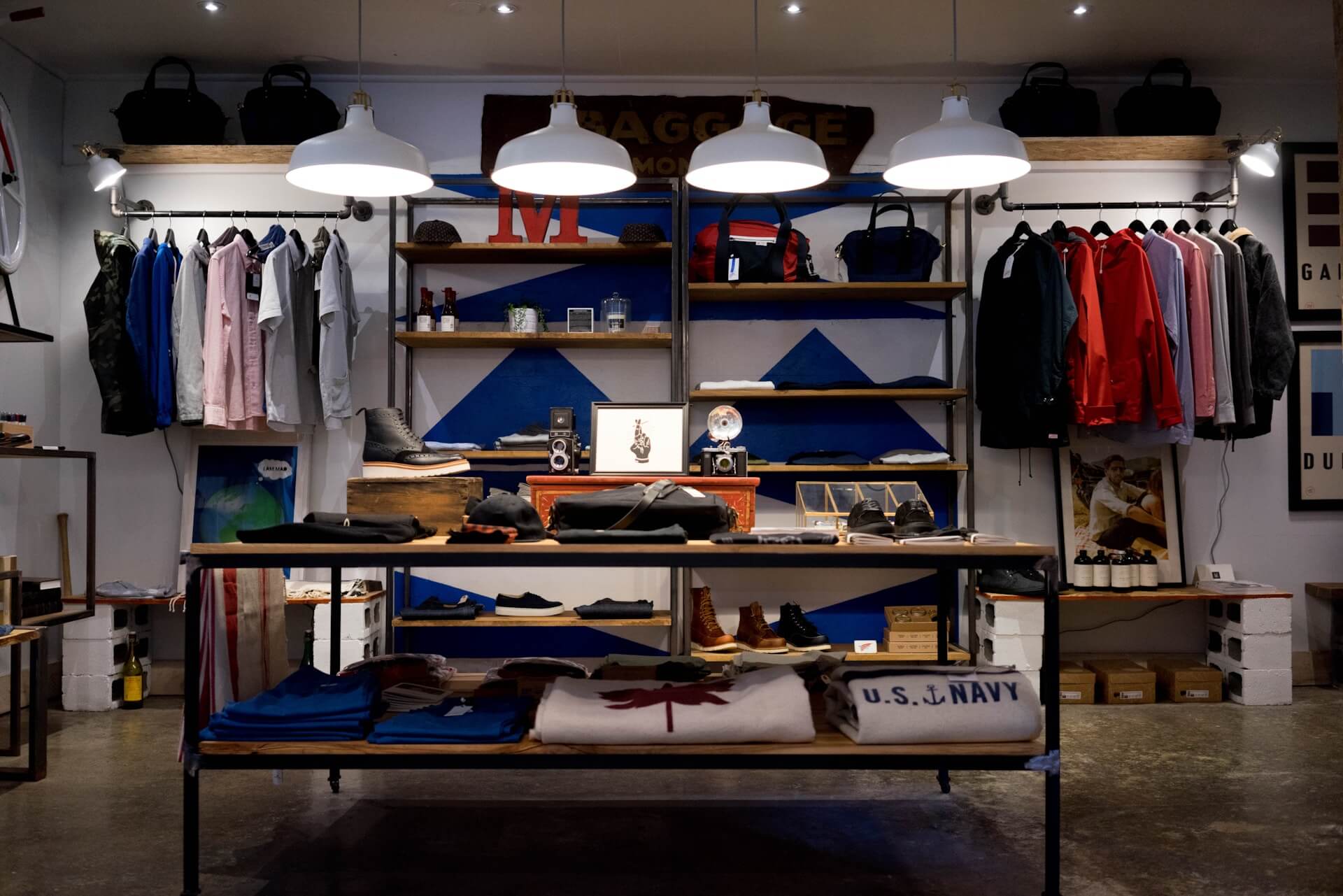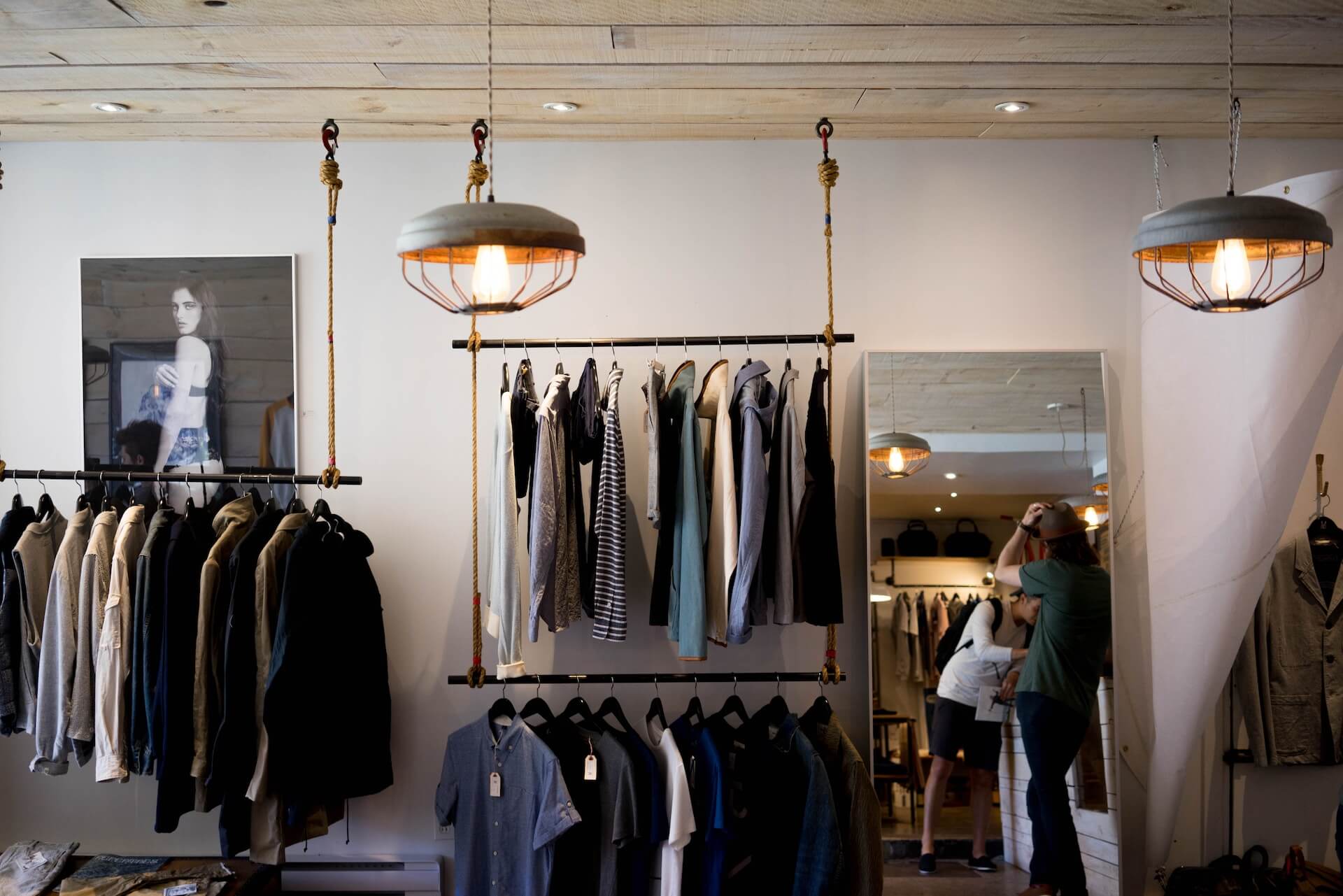The fashion industry is a constantly evolving and highly competitive field that offers a wealth of opportunities for budding entrepreneurs. If you have a passion for fashion and a desire to succeed in the business world, then fashion entrepreneurship may be the perfect path for you. In this article, we will take a closer look at the concept of fashion entrepreneurship, exploring the skills and strategies required to turn your passion for fashion into a profitable business venture. From identifying your target market to building a solid brand identity, we will equip you with the tools you need to succeed in this exciting and dynamic industry. So if you’re ready to take the next step in your fashion career, read on to discover the fundamental principles of fashion entrepreneurship.
Table of Contents
- 1. The Rise of Fashion Entrepreneurship: A Lucrative Career Path for Creatives
- 2. What It Takes to Build a Successful Business in the Fashion Industry
- 3. The Importance of Developing a Clear Business Plan for Your Fashion Venture
- 4. Understanding Market Trends and Identifying Your Niche Market
- 5. Building a Solid Brand Identity and Marketing Strategy in the Fashion Industry
- 6. Funding Your Fashion Startup: How to Secure Investors and Financing
- 7. The Challenges of Manufacturing and Sourcing Materials for Your Products
- 8. Creating a Fashion Line: From Ideation to Production
- 9. Using Social Media and E-Commerce to Sell Your Products to a Global Audience
- 10. Managing Cash Flow and Financials for Your Fashion Business
- 11. Hiring and Managing a Team for Your Fashion Startup
- 12. Scaling Up Your Fashion Business: Plan for Growth and Expansion.
- Our Readers Ask
- Final Thoughts
1. The Rise of Fashion Entrepreneurship: A Lucrative Career Path for Creatives
Fashion entrepreneurship has become one of the most sought-after career paths in recent years. With the rise of social media and online marketplaces, fashion entrepreneurs have access to a global audience and can reach customers in ways that were previously unimaginable. This has led to a surge in fashion startups and a growing demand for individuals with creative flair and business acumen.
One of the most attractive aspects of fashion entrepreneurship is the potential for financial reward. Successful fashion entrepreneurs can create highly profitable businesses, with some even going on to become millionaires. Additionally, individuals who pursue fashion entrepreneurship often have the opportunity to be their own boss and create their own work-life balance. However, it’s important to note that starting a fashion business is not easy, and those who are serious about pursuing this career path will need to be dedicated, passionate, and willing to put in the hard work necessary to succeed.
2. What It Takes to Build a Successful Business in the Fashion Industry
In the fashion industry, building a successful business is a feat that requires a combination of key ingredients. Firstly, a clear vision for your brand is crucial. This vision should cover everything from your unique selling point, target customer, and product offerings. Having a clear vision for your brand, you will be better equipped to navigate the sea of fashion trends and changing consumer preferences.
In addition to a clear vision, perseverance is another vital component of building a successful business in the fashion industry. The fashion industry is known for its cut-throat competition and fast-paced nature. Being prepared to go the extra mile, work long hours, and overcome obstacles is essential. A willingness to adapt to feedback, learn from mistakes, and continuously innovate is also crucial. With these qualities, you’ll be better equipped to stay relevant and ahead of the curve in this ever-changing industry.
 3. The Importance of Developing a Clear Business Plan for Your Fashion Venture
3. The Importance of Developing a Clear Business Plan for Your Fashion Venture
A clear business plan is an essential component of any successful venture, and fashion is no exception. Developing a solid plan for your fashion business will help you to define your target market, identify your unique selling points, and create a strong brand identity. This plan will serve as a roadmap for your business, outlining your goals, objectives, and strategies for achieving success.
One of the most significant advantages of having a robust business plan is that it helps you to stay focused and on track. As you start your fashion venture, there will be many distractions and temptations that can lead you off course. Having a clear plan in place can help you stay grounded and ensure that you are making decisions that align with your long-term goals. By setting clear benchmarks and timelines, you can stay accountable and measure your progress along the way.
A solid business plan will also be invaluable when seeking funding for your fashion venture. Investors, banks, and other financing sources will want to see a clear and detailed plan for how you intend to use their money to grow your business. By having a professional-looking plan in place, you can show potential investors that you are serious about your venture and that you have a solid plan to achieve success. With a well-thought-out and detailed plan, you will be well on your way to building a successful fashion business.
4. Understanding Market Trends and Identifying Your Niche Market
In order to succeed in business, it’s essential to stay up-to-date with the latest market trends and to identify a niche market that aligns with your products or services. By keeping tabs on consumer behavior and preferences changes, you can fine-tune your marketing strategies and stay one step ahead of the competition.
One way to understand market trends is to conduct market research. This can involve surveys, focus groups, and online analytics tools to gain insights into what consumers are looking for in products or services. You can then use this information to develop a marketing plan that resonates with your target audience. Additionally, identifying your niche market can help you to differentiate your products or services from those of your competitors. This can involve finding a specific segment of customers who have a particular need that your product or service can fulfill, or it can involve targeting a group of consumers who are underserved by the current market. By focusing on your niche market, you can develop a clear marketing message that speaks directly to that customer group and helps you stand out.
5. Building a Solid Brand Identity and Marketing Strategy in the Fashion Industry
In the fashion industry, it’s essential to establish a strong brand identity that resonates with your target audience. A robust brand identity goes beyond just having a logo and a catchy slogan. It’s about creating a consistent, recognizable image that distinguishes you from your competitors. To achieve a solid brand identity, you need to invest time in understanding your customers’ needs, values, and preferences. Research your target market and create a buyer persona representing your ideal customer. Once you clearly understand your audience, you can start building a brand that speaks directly to them.
Your marketing strategy is equally important as your brand identity. It’s how you communicate your message to the world and connect with potential customers. The fashion industry is competitive, and your marketing efforts need to be creative, innovative, and disruptive to stand out. Utilize a combination of traditional and digital marketing channels to reach your target audience. A well-rounded marketing strategy might include social media marketing, email marketing, content marketing, influencer marketing, and in-person events. Whatever channels you choose, ensure that your messaging aligns with your brand identity and speaks directly to your target audience. Building a solid brand identity and marketing strategy takes time and effort. But with persistence, consistency, and creativity, you can establish yourself as a go-to brand in the fashion industry.
 6. Funding Your Fashion Startup: How to Secure Investors and Financing
6. Funding Your Fashion Startup: How to Secure Investors and Financing
When it comes to starting a fashion business, securing investors and financing is critical. This requires a solid business plan and pitch highlighting potential growth and profitability. Before seeking funding, ensure you clearly understand your target audience, competition, and marketing strategies. Having a realistic financial plan that includes projected revenue, expenses, and profit margins is also important. Consider presenting your business plan to trusted advisors or mentors before seeking out investors to ensure that you have a solid plan in place.
There are several options for securing funding for your fashion startup. Traditional sources of financing include banks and investors, while newer options like crowdfunding and peer-to-peer lending are becoming increasingly popular. When approaching investors, be prepared to showcase your product or service, sell your vision, and demonstrate a sound financial strategy. Consider utilizing online platforms like LinkedIn and AngelList to connect with potential investors and expand your network. Above all, be persistent, and don’t be afraid to pivot your strategy if needed. With the right plan and strategy in place, securing funding for your fashion startup is within reach.
7. The Challenges of Manufacturing and Sourcing Materials for Your Products
When it comes to manufacturing and sourcing materials for your products, you might face some challenges along the way. One of the main challenges that businesses face is the cost of raw materials. As a manufacturer, you need to keep a close eye on the cost of your materials to ensure that you are making a profit. Moreover, in case of any fluctuations, you need to adjust the price of your products to compensate for the variations in raw material costs.
Another challenge is the quality of your materials. The quality of the raw materials you use will directly impact the finished product. If you don’t source good-quality materials, you may end up with defective or substandard products. Additionally, it is essential to keep an eye on the production process, particularly if you are producing overseas. Managing the quality of raw materials from a distance can be challenging, so it’s critical to have well-defined quality control procedures in place. To ensure that the quality of your products stays consistent, work closely with your suppliers, and monitor the quality of the raw materials you use.
8. Creating a Fashion Line: From Ideation to Production
Once you have an idea for a fashion line, it’s time to start the process of turning that idea into a tangible product. This process involves several key steps, including research, design, sourcing materials, prototyping, and production.
Firstly, it’s crucial to do thorough research on the market and target audience. Look at current trends, analyze the competition, and determine what unique selling points your fashion line can offer. Once you have a clear idea of your target audience, it’s time to start designing. Use your creativity and imagination to come up with designs that reflect your brand vision and appeal to your target audience. When you’re satisfied with the designs, it’s time to start sourcing materials that meet your quality and sustainability standards. Once you’ve found the right materials, it’s time to move on to prototyping and testing. This phase is essential for making any needed adjustments or improvements before moving into production. Finally, it’s time to start producing your fashion line and launching it to the world. With careful planning and attention to detail throughout the process, you can create a successful and impactful fashion line.
 9. Using Social Media and E-Commerce to Sell Your Products to a Global Audience
9. Using Social Media and E-Commerce to Sell Your Products to a Global Audience
One of the most effective ways to reach a global audience for your products is by utilizing social media platforms such as Facebook, Twitter, Instagram, and LinkedIn. With billions of users worldwide, you can easily build a loyal following by creating engaging content that resonates with your target market. You can also leverage the power of paid advertising to reach a wider audience and even use social media influencers to help promote your products to their followers.
In addition to social media, e-commerce platforms like Amazon, eBay, and Shopify can provide you with a powerful digital storefront to sell your products around the globe. With these platforms, you can easily set up an online store, list your products, and start selling to customers from all over the world. You can also track your sales performance, manage your inventory, and process orders all in one place. By embracing social media and e-commerce, you can expand your reach and tap into new markets to grow your business exponentially.
11. Hiring and Managing a Team for Your Fashion Startup
As a fashion entrepreneur, one of the most critical aspects of your success lies in your team. You need a group of talented and driven individuals who can help you build and scale your startup. From hiring to managing, here are some essential tips to help you create a thriving team for your fashion business.
When it comes to hiring, it’s crucial to look beyond qualifications and experience. While these factors are essential, the real magic happens when you find someone who aligns with your brand values and vision. Look for candidates who are passionate and enthusiastic about the fashion industry and share your perspective. Additionally, don’t be afraid to hire individuals with diverse backgrounds and skill sets. This can lead to unique perspectives and solutions that can propel your startup forward. Once you’ve hired your dream team, it’s essential to prioritize clear communication and set expectations. Develop a clear chain of command and make sure everyone knows their roles and responsibilities. Encourage open communication and feedback, and create a positive work environment that fosters innovation and creativity. By putting your team first, you’ll create a positive and productive work environment that sets your fashion startup up for success.
 12. Scaling Up Your Fashion Business: Plan for Growth and Expansion
12. Scaling Up Your Fashion Business: Plan for Growth and Expansion
To scale up your fashion business, you must have a solid plan that will guide you through your growth and expansion process. A good starting point is to identify your target market, their needs, and how you can satisfy those needs with your products. It would be best to analyze your competitors, their pricing strategy, and how to differentiate your brand from theirs. Adequate market research always precedes successful scaling up.
Next, ensure that your production, sales, and distribution infrastructures are capable of handling increased demand. It will help if you improve your customer service by hiring more staff or outsourcing the service. Also, ensure that your inventory management system is optimized to prevent stockouts. You do not want to lose sales due to insufficient inventory. Finally, consider investing in branding and marketing to increase your visibility and customer base. Launching a social media campaign may be a good start. By following these steps, you will be on your way to scaling up your fashion business.
Another way to scale up your fashion business is to consider external financing. You may require external funding to buy new machinery, hire more staff, and increase production capacity. You can reach out to venture capitalists or angel investors for equity financing. Alternatively, you may take out a loan from a bank or a peer-to-peer lending platform. Whichever option you choose, ensure that the terms and conditions fit your business needs and that you can repay the loan. Additionally, consider partnerships and collaborations with other fashion brands, influencers, and celebrities to expand your reach and customer base. By following these methods, you can grow your fashion business beyond what you ever thought was possible.
Our Readers Ask
Q: What is fashion entrepreneurship, and how does it differ from traditional entrepreneurship?
A: Fashion entrepreneurship is a type of entrepreneurship that focuses on businesses that revolve around fashion, ranging from designing, manufacturing, and retailing clothing, accessories, and footwear to branding and marketing fashion products. It differs from traditional entrepreneurship by the fact that it requires a deep understanding of the fashion industry and the latest trends to create products that appeal to consumers successfully.
Q: What are some tips for aspiring fashion entrepreneurs to turn their passion into profit?
A: Firstly, understand your niche audience, and create products that resonate with their fashion tastes and preferences. Secondly, establish a robust online presence through social media channels such as Instagram, Facebook, and Tiktok, which can help you showcase your products and reach a wider audience. Thirdly, have a clear business plan and consider seeking out mentorship or partnering with established fashion brands to gain knowledge and experience. Lastly, continuously innovate and stay ahead of fashion trends to remain competitive in the ever-evolving fashion industry.
Q: What are some challenges faced by fashion entrepreneurs, and how can they overcome them?
A: Some challenges include fierce competition, strict legal requirements, and fluctuating market demands. Fashion entrepreneurs can overcome these challenges by focusing on creating a unique product that stands out from competitors, seeking legal advice from professionals, and diversifying products to cater to multiple trends. Additionally, building resilience and having a strong support system can help entrepreneurs overcome the challenges and obstacles they may face in their journey.
Q: How important is sustainability for fashion entrepreneurs, and how can it be incorporated into their business model?
A: Sustainability is crucial in the fashion industry, as it not only benefits the environment but also appeals to consumers who are increasingly environmentally conscious. Fashion entrepreneurs can incorporate sustainability into their business model by using eco-friendly materials, implementing sustainable production methods, and promoting ethical labor practices. By taking proactive steps towards sustainability, fashion entrepreneurs can not only contribute to a better planet but also attract a loyal customer base that values sustainability.
Q: Lastly, what are some success stories of fashion entrepreneurship?
A: There are many successful fashion entrepreneurs, such as Rami Kashou, the founder of Rami Kashou Design, who became a finalist on the television show Project Runway and went on to launch his own fashion brand. Another notable success story is Sophia Amoruso, the founder of Nasty Gal, who started her business selling vintage clothing on eBay and went on to become one of the most successful fashion brands in the market. These success stories underline the importance of perseverance, hard work, and innovation in the fashion industry.
Final Thoughts
Fashion entrepreneurship can be a very lucrative and fulfilling career path. With the right combination of passion, creativity, strategic planning, and resourcefulness, anyone can turn their fashion ideas into a profitable business. However, it’s essential to acknowledge that entrepreneurship is not for everyone. It requires hard work, determination, and the willingness to take risks and learn from failures. Success as a fashion entrepreneur also depends on constantly improving and adapting to the ever-changing market trends and industry dynamics. Therefore, if you’re considering starting a fashion business, be prepared to put in the effort, stay up-to-date with industry trends, and seek out opportunities for growth and advancement. Success is achievable with dedication, creativity, and strategic planning.







